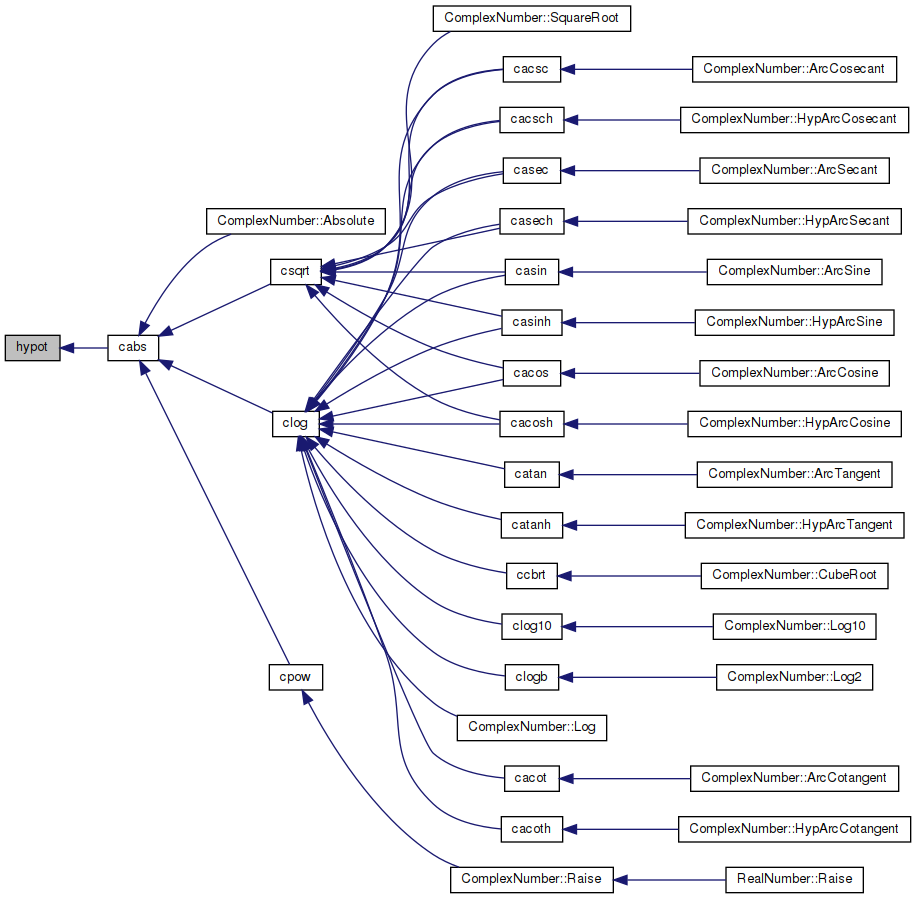hypot.c File Reference
#include "prim.h"
Include dependency graph for hypot.c:

Go to the source code of this file.
Functions | |
| double | hypot (double x, double y) |
| hypot More... | |
Function Documentation
◆ hypot()
| double hypot | ( | double | x, |
| double | y | ||
| ) |
hypot
Method If (assume round-to-nearest) z=x*x+y*y has error less than sqrt(2)/2 ulp, than sqrt(z) has error less than 1 ulp (exercise).
So, compute sqrt(x*x+y*y) with some care as follows to get the error below 1 ulp:
Assume x>y>0;
(if possible, set rounding to round-to-nearest)
1. if x > 2y use
x1*x1+(y*y+(x2*(x+x1))) for x*x+y*y
where x1 = x with lower 32 bits cleared, x2 = x-x1; else
2. if x <= 2y use
t1*y1+((x-y)*(x-y)+(t1*y2+t2*y))
where t1 = 2x with lower 32 bits cleared, t2 = 2x-t1,
y1= y with lower 32 bits chopped, y2 = y-y1. NOTE: scaling may be necessary if some argument is too
large or too tinySpecial cases: hypot(x,y) is INF if x or y is +INF or -INF; else hypot(x,y) is NAN if x or y is NAN.
Accuracy:
hypot(x,y) returns sqrt(x^2+y^2) with error less
than 1 ulps (units in the last place)
Definition at line 81 of file hypot.c.
References sqrt().
Referenced by cabs().
#define GET_HIGH_WORD(i, d)
Get the more significant 32 bit int from a double.
Definition: prim.h:167
#define SET_HIGH_WORD(d, v)
Set the more significant 32 bits of a double from an int.
Definition: prim.h:198
Here is the call graph for this function:

Here is the caller graph for this function:

